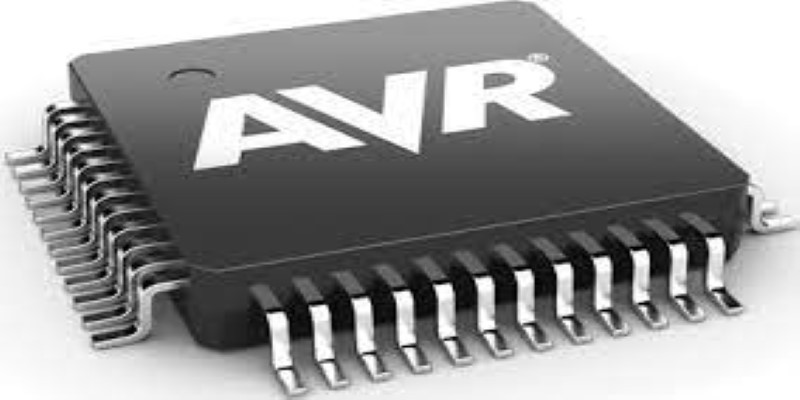
About Course
AVR Microcontroller
An AVR microcontroller is a single-chip microcontroller designed by Atmel Corporation. It is based on the Atmel 8-bit AVR RISC architecture, which is a modified Harvard architecture with on-chip program and data memory. AVR microcontrollers can be programmed using a variety of programming languages, including C and assembly. The AVR microcontroller was initially developed in the early 1990s by Atmel Corporation, and has since become one of the most popular microcontroller architectures in the world. The AVR architecture is based on the RISC (Reduced Instruction Set Computer) architecture, which is designed to reduce the number of instructions needed to accomplish a given task. This means that AVR microcontrollers are well-suited for applications where speed, low power consumption and small size are important. The AVR architecture is also designed to be highly flexible and extensible. It features a wide range of on-chip peripherals, including timers, analog-to-digital converters, serial communications interfaces, and more. The AVR architecture also supports advanced features such as interrupt handling, flash memory programming, and power saving modes. AVR microcontrollers are widely used in embedded systems, robotics, and other applications where low cost, low power consumption and small size are important. They are also used in consumer electronics, such as digital cameras, MP3 players, and DVD players. The AVR architecture is also popular among hobbyists and makers, as it is widely available and can be programmed using a wide range of programming languages. Arduino boards, which are widely used in the maker community, are based on the AVR architecture. In conclusion, AVR microcontrollers are widely used in embedded systems, robotics and consumer electronics. They are based on the RISC architecture, which is designed for low power consumption and small size. They also feature a wide range of on-chip peripherals, and can be programmed using a variety of programming languages. The AVR architecture is also popular among hobbyists and makers due to its flexibility and availability.
This course is for beginner and advanced electronics engineers who want to gain and increase experience in developing embedded systems on AVR microcontrollers. I think that AVR ATMEL microcontrollers are the most advanced 8-bit microcontrollers. All ARDUINO projects are built by using these microcontrollers. After completing the course, the student will receive the necessary knowledge about I/O ports, ADC, PWM, EEPROM, timers, interrupts. Much attention in this course will be paid to interfaces with external devices – sensors, wireless devices, real-time clocks, external EEPROM, etc…
Who this course is for:
- Beginner embedded systems developers
- Anyone with a curiosity for making electronics
- People with no experience in electronics
- Children over 12 years old
Course Content
AVR Microcontroller
-
Introduction to Microcontroller and Microprocessor
00:00 -
Harvard and Von Neumann (Princeton) Architecture, Harvard Vs Von Neumann, AVR Harvard architecture
00:00 -
RISC Features in AVR Controller, RISC and CICS comparison
00:00 -
Introduction to AVR Microcontroller
00:00 -
Data Formats and Directives in AVR Microcontroller
00:00 -
RAM and ROM Architecture of ATmega32
00:00 -
Architecture of AVR Microcontroller
00:00 -
Status Register of Atmega32 Microcontroller
00:00 -
Pipelining in AVR Microcontroller
00:00 -
Arithmetic Instructions and Programs, Assembly Language Programming of AVR Microcontroller
00:00 -
Data Transfer Instructions and Programs, Assembly Language Programming of AVR Microcontroller
00:00 -
BRANCH and CALL Instructions and Programs, Assembly Language Programming of AVR Microcontroller
00:00 -
Logical Instructions and Programs, Assembly Language Programming of AVR Microcontroller
00:00 -
MACRO concept of AVR Microcontroller
00:00 -
Accessing EEPROM in AVR using Assembly Language
00:00 -
Addressing Modes of AVR Microcontroller
00:00 -
IO Port Programming of AVR Microcontroller
00:00 -
Stack and Subroutine in AVR Microcontroller
00:00 -
Pin Diagram of ATmega32 AVR Microcontroller
00:00 -
Fuse Bits and Lock Bits of ATmega32, Format of Fuse Byte of ARmega32, AVR Microcontroller
00:00 -
Programming Methods of AVR Microcontroller, Parallel Programming, ISP, Boot Loader, JTAG for ISP
00:00 -
Clock Sources of Atmega32 AVR Microcontroller
00:00 -
AVR Programming using C Language, Why to Program the AVR in C Language, AVR C Data Types, ATmega32
00:00 -
AVR Byte Size IO Port Programming using C, AVR IO Programming using C Language, AVR Microcontroller
00:00 -
AVR Byte Size IO Port Programming using C Language, AVR Time Delay, IO Programming in AVR using C
00:00 -
AVR bit size IO Port Programming using C, ATmega32, AVR Microcontroller
00:00 -
AVR EEPROM Programming in C, ATmega32, AVR Microcontroller,
00:00 -
AVR Code Conversion Programming Using C Language, AVR Microcontroller Programming, ATmega32
00:00 -
Introduction to AVR Timer, #AVRTimer
00:00 -
Timer 0 Registers in ATmega32, #TCNT0Register, #OCR0Register, #TCCR0Register, #TIFRRegister
00:00 -
Timer 0 Normal Mode Programming in AVR Microcontroller, #ATmega32, #EngineeringFunda, #AVRTimer
00:00 -
Timer 0 CTC Mode Programming in AVR Microcontroller, #ATmega32, #AVRTimer
00:00 -
Timer 0 as Counter Programming, #ATmega32, #AVRTimer, #AVRMicrocontroller
00:00 -
Timer 1 Normal & CTC mode Programming, #ATmega32, #AVRTimer, #AVRMicrocontroller
00:00 -
Programming of Timer 1 Normal & CTC mode, #ATmega32, #AVRTimer, #Timer1
00:00 -
Timer 2 Normal mode Programming, #ATmega32, #AVRTimer, #AVRMicrocontroller
00:00 -
AVR Interrupt, #ATmega32, #AVRInterrupt, #AVRMicrocontroller
00:00 -
AVR Timer 0 Overflow Interrupt, #ATmega32, #AVRInterrupt, #AVRMicrocontroller
00:00 -
AVR Timer 2 Compare match Interrupt, #ATmega32, #AVRInterrupt, #AVRTimer, #AVRMicrocontroller
00:00 -
AVR External Hardware Interrupt, #AVRInterrupt, #ATmega32, #AVRMicrocontroller,
00:00 -
AVR External Hardware Interrupt C Program, #AVRInterrupt, #AVRMicrocontroller
00:00 -
AVR Serial Communication, #AVRSerialCommunication, #AVRMicrocontroller, #ATmega32
00:00
Student Ratings & Reviews

